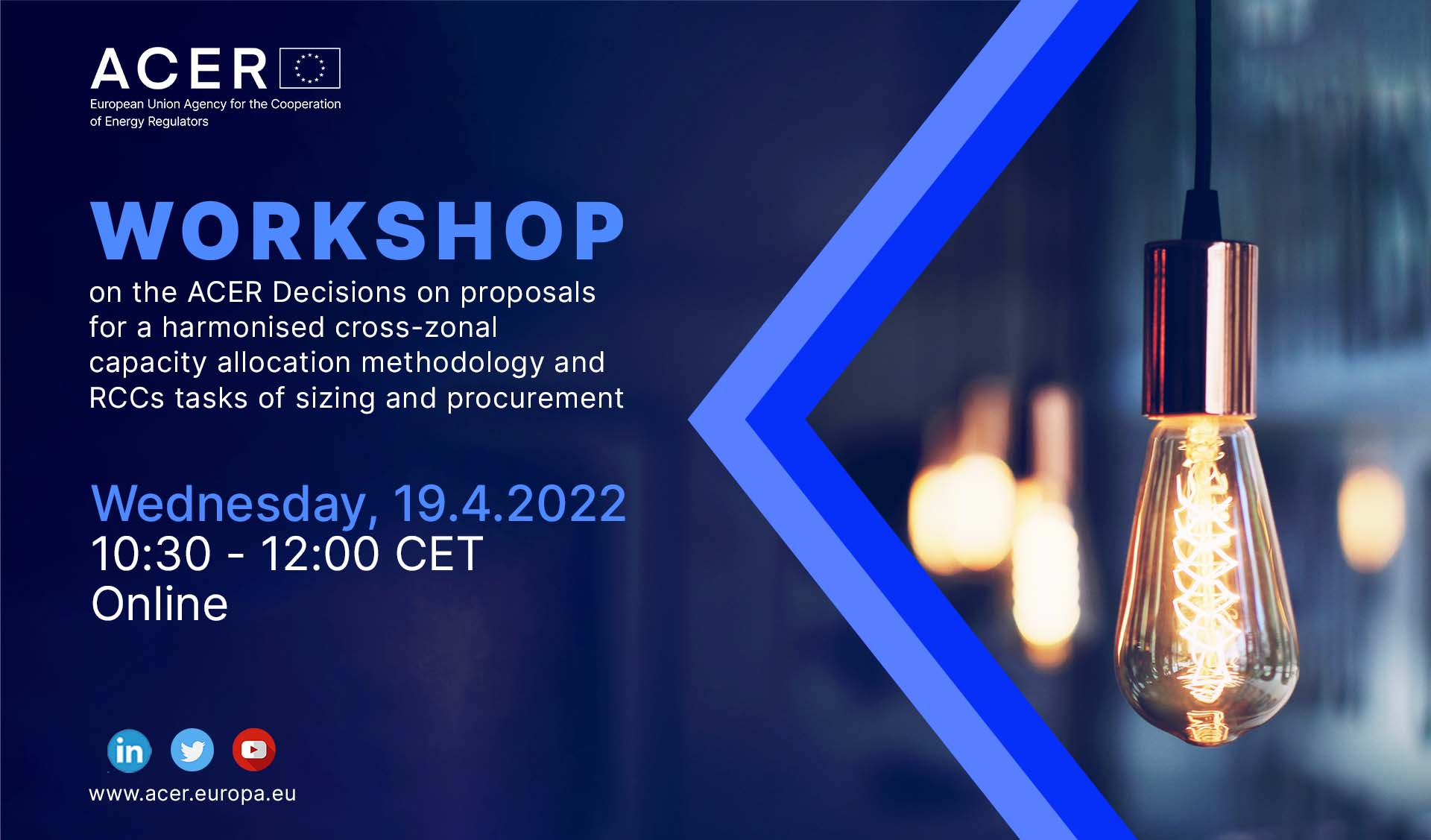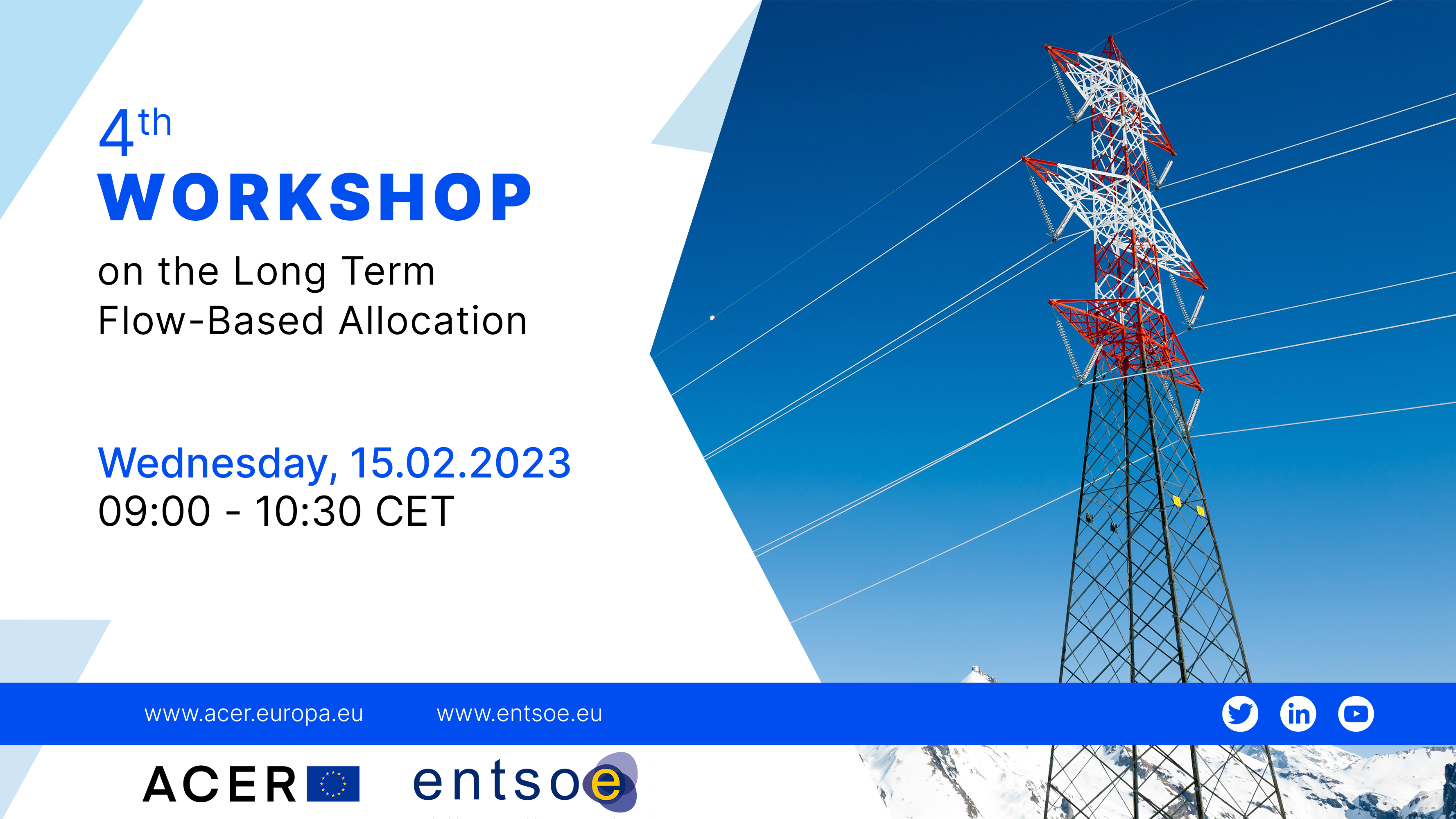ACER will consult on a proposal for the harmonised cross-zonal capacity allocation methodology

ACER will consult on a proposal for the harmonised cross-zonal capacity allocation methodology
What is it about?
The transmission system operators (TSOs) submitted to ACER a proposal for the harmonised methodology for cross-zonal capacity allocation for the exchange of balancing capacity or sharing of reserves.
The allocation of cross-zonal capacity allows the integration of balancing capacity markets, creates welfare, lowers the costs for the procurement of balancing capacity, hence lowering costs for tariff payers, while ensuring security of supply.
The processes covered by the methodology (i.e. co-optimisation and market-based process) compare the market value of cross-zonal capacity for the balancing capacity market and for the day-ahead electricity market, and allocates the capacity to whichever of these markets generates the most welfare by using the cross-zonal capacity.
The methodology will provide harmonised rules and processes and will therefore replace the existing methodologies for co-optimisation and regional market-based processes.
How does ACER contribute?
ACER will assess the methodology proposed by the TSOs and revise it where necessary.
What are the next steps?
ACER has six months (until 16 June 2023) to decide on the TSOs’ proposal.
To collect the views of stakeholders, ACER’s public consultation on the TSOs’ proposal will be launched end of March for four weeks (provisionally foreseen from 30 March to 27 April).
An ACER workshop will take place on 19 April 2023.
ACER Workshop on the ACER Decisions on proposals for a harmonised cross-zonal electricity capacity allocation methodology and RCCs tasks of sizing and procurement
ACER Workshop on the ACER Decisions on proposals for a harmonised cross-zonal electricity capacity allocation methodology and RCCs tasks of sizing and procurement

ACER calls for improvements to the proposed Belgian gas transmission tariffs

ACER calls for improvements to the proposed Belgian gas transmission tariffs
What is in the report?
ACER assesses the proposed methodology to calculate tariffs, including:
- The details on the input parameters to the methodology;
- The regulatory account and the accumulated congestion revenue; and
- The methodology applicable to the L-gas network to transport gas from the Netherlands to France.
What are ACER’s main findings?
The Agency observes that improvements on the proposed transmission tariffs can be achieved based on the provisions of the EU Network Code on Gas Transmission Tariffs and provides some recommendations to the Belgian national regulatory authority CREG.
ACER recommends to CREG to:
- Shorten the duration of the tariff period. This should facilitate the forecast of the contracted capacity, and should help minimise potential under- and over-recoveries as well as the reconciliation of the regulatory accounts.
- Compare (and publish) the forecasted contracted capacity vis-à-vis the realised contracted capacity. This improvement should allow improving the accuracy of the capacity forecast, improve the cost-reflectivity of tariffs and minimises the need to reconcile revenue.
- Ensure the reconciliation of the Transmission System Operator’s (TSO), regulatory accounts, which has accumulated significant over-recoveries, including significant congestion revenue.
- Provide information on the allowed revenue methodology of the TSO, in particular, on the regulatory asset base revaluation of the TSO.
- Provide additional transparency on the cost and the capacity forecast that is used for the calculation of tariffs.
Access the report on the Belgian gas tariffs.
Access all ACER reports on national tariff consultation documents.
ACER workshop on the further development of the EU electricity forward market
ACER workshop on the further development of the EU electricity forward market

ACER proposes changes to improve EU electricity forward markets

ACER proposes changes to improve EU electricity forward markets
What is it about?
ACER’s policy paper on the further development of the EU electricity forward market:
- Identifies problems of this market segment, among which market fragmentation and lack of integration are the main ones; and
- Recommends solutions (e.g. regional virtual trading hubs to pool liquidity). Such regional hubs need to be complemented by accessible transmission rights to cover the remaining risks of the market participants.
This policy paper serves as ACER’s key recommendations on how to change the Forward Capacity Allocation Regulation.
Background
In the electricity forward market, market participants can trade electricity up to multiple years ahead of its delivery allowing them to protect or hedge themselves against future price fluctuations. Currently, with the exception of the Nordic region, each zone has its own market, bridged by transmission rights issued by the transmission system operators (TSOs). This leads to a fragmented and unequal distribution of the liquidity amongst the different national markets. Unlike the day-ahead and intraday markets, the EU forward market does not work as a single integrated EU market.
While this problem has been partially addressed in the short term markets through the allocation of cross zonal capacities, ACER identified scope to vastly improve long term forward markets.
What are the proposed changes?
ACER proposes a set of changes to improve the functioning of the EU electricity forward market:
- Creation of virtual trading hubs combined with the issuance of transmission rights between bidding zones and those hubs;
- Improved allocation of the transmission rights (more frequent, over longer period of time, in revised quantities) by the TSOs;
- Transmission rights issued in the form of financial obligations; and
- Optionally, the possibility to assign market making tasks.
What are the expected benefits of the changes?
- Regional hubs will attract and pool the liquidity of many zones, thereby significantly increasing the forward market liquidity.
- Hedging products at such hubs will cover the majority of price risks faced by market participants, whereas the remaining risk would be covered by transmission rights issued by the TSOs.
- Other proposed changes aim to make these transmission rights more accessible, liquid, as well as to better match the hedging needs of the market participants.
What are the next steps?
The recommended policy options are ACER’s proposal for changes to the Regulation on Forward Capacity Allocation. To continue the revision process of this Regulation, the European Commission could request ACER to make a recommendation that would list the proposed amendments. Following the issuance of such recommendation, the European Commission could initiate the comitology phase.
To present its policy paper, ACER organises a workshop on 13 March 2023.
Access the ACER’s policy paper on the further development of the EU electricity forward market.
4th ACER - ENTSO-E Workshop on Long Term Flow-Based Allocation
4th ACER - ENTSO-E Workshop on Long Term Flow-Based Allocation
